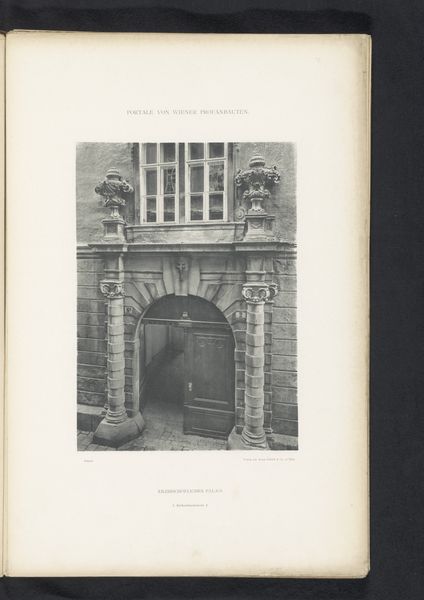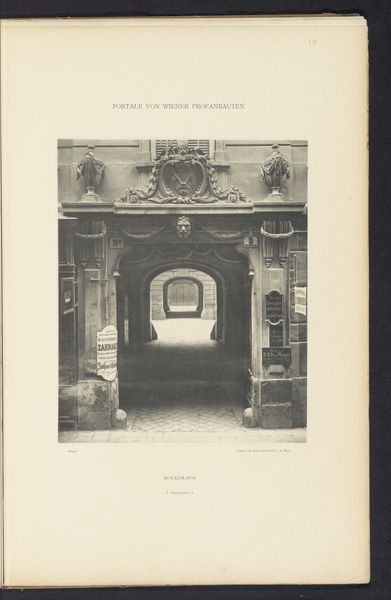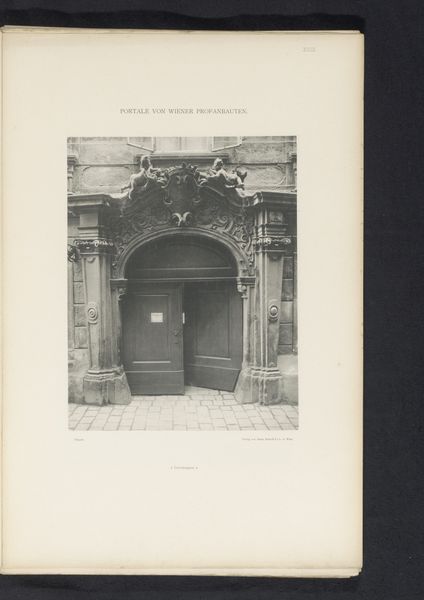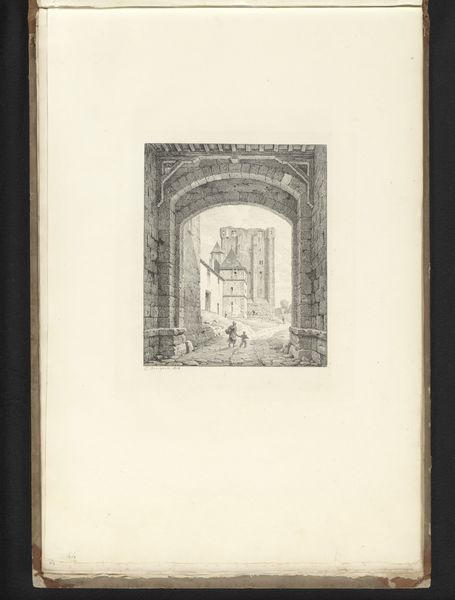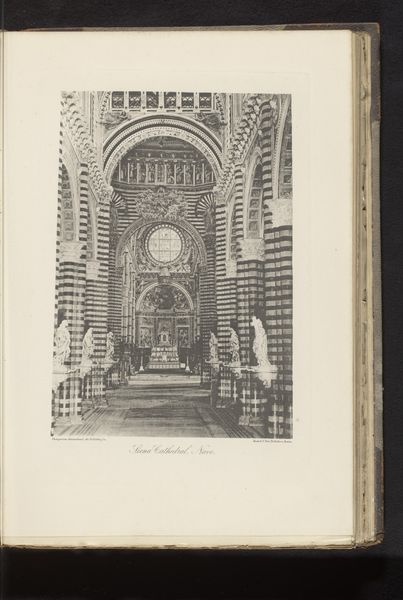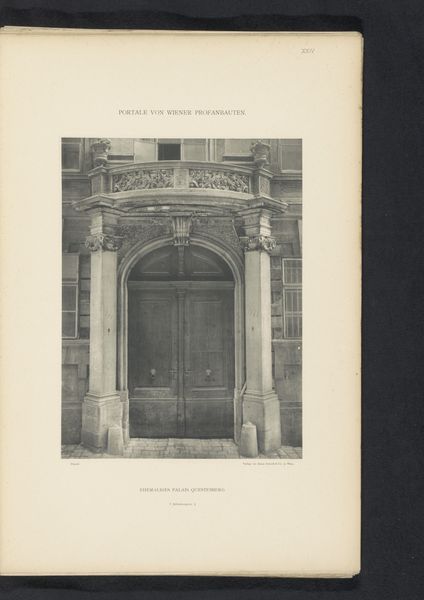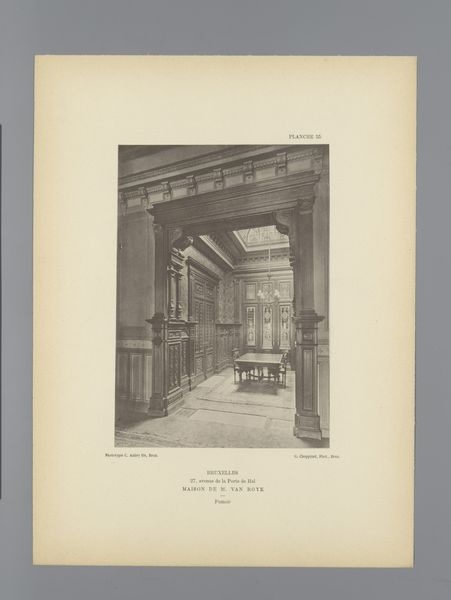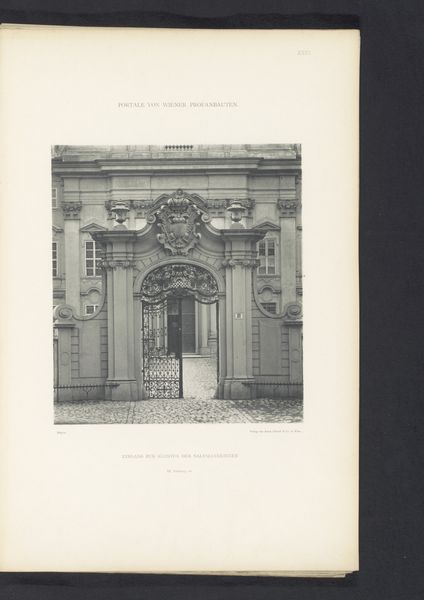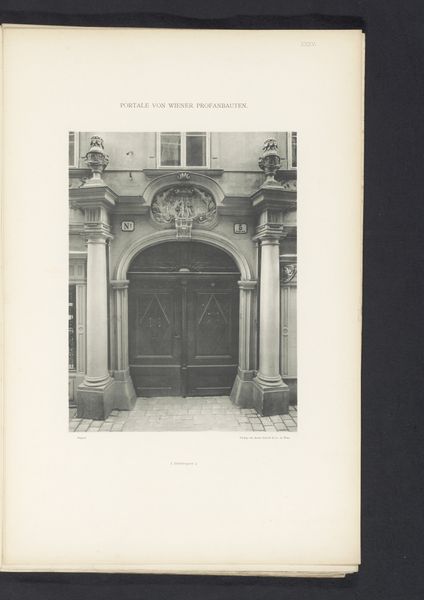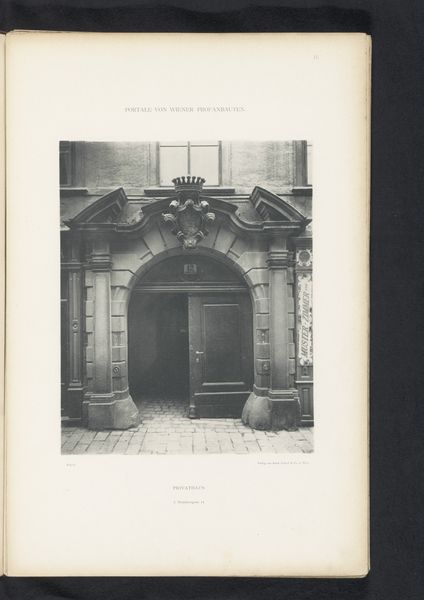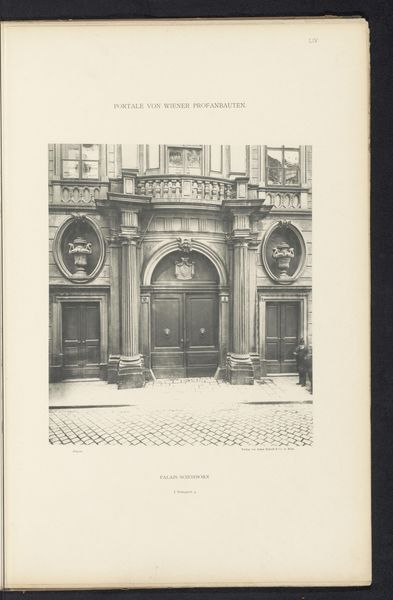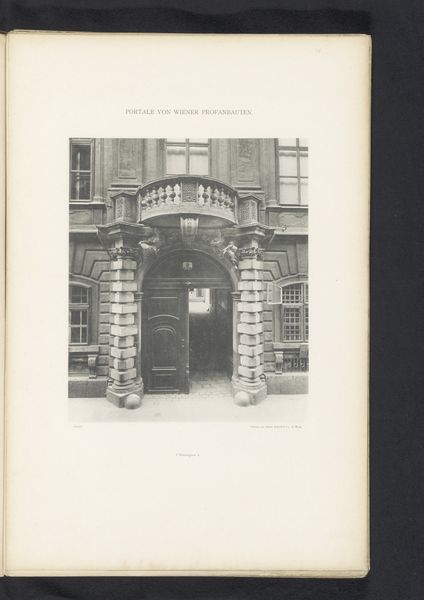
Gezicht op de Kipdorppoort van Oud-Antwerpen op de Wereldtentoonstelling van 1894 in Antwerpen Possibly 1894 - 1895
0:00
0:00
print, photography
# print
#
photography
#
cityscape
#
history-painting
#
realism
Dimensions: height 274 mm, width 209 mm
Copyright: Rijks Museum: Open Domain
Curator: This intriguing photograph, potentially from 1894 or 1895, offers a "View of the Kipdorppoort of Old Antwerp at the 1894 World's Fair in Antwerp." It's presented as a print, based on an original photograph, it seems. Editor: Immediately, the sheer density of the gateway strikes me. It feels almost aggressively monumental. What’s going on with those twisting column forms? Curator: It's a fascinating choice of subject for a world's fair. Rather than showcasing industrial progress, it romanticizes a fabricated historical scene. Think about the politics of representing a constructed “Old Antwerp” while simultaneously engaging with modern technology. It speaks to anxieties around industrialization and the desire to create a fixed, idealized past. Editor: Exactly. Look at the faux-medieval texture – seemingly carved stone everywhere. But it's all built for temporary consumption. The labor involved in creating such a massive, yet ultimately disposable, structure must have been considerable. Were the workers acknowledged? Curator: Unlikely. The focus was likely on projecting a certain civic identity—one rooted in idealized notions of Antwerp's historical significance. It's interesting to think about who was allowed into this “Old Antwerp” and who was excluded. World's Fairs are powerful tools for shaping national narratives. Editor: And shaping perceptions through materials. Consider how the photograph itself—reproduced as a print—contributes to this layering of artifice. The stark contrasts flatten the scene, adding to the theatrical quality, reducing a 3-D building into a mere representation of a space for people to experience, therefore distancing them from the work of human hands behind its construction. Curator: That brings up questions around authenticity. Was it meant to educate or to entertain? Likely both, which adds to the complex tension at play. The fair acted as a stage setting. Editor: And these temporary structures were literally manufactured, pieced together. It's important to acknowledge those unacknowledged labor practices of producing this historical theme park for mass enjoyment and the waste. Curator: Yes, stepping back, it reveals much about how societies grapple with progress, identity, and representation through image making. Editor: Agreed, and underscores the very real human labor that props up any illusion of "historical grandeur," even within the transient spectacle of a World’s Fair.
Comments
No comments
Be the first to comment and join the conversation on the ultimate creative platform.
